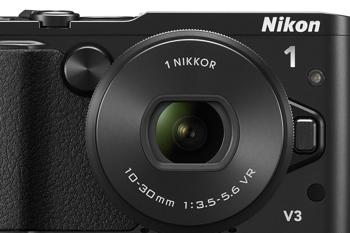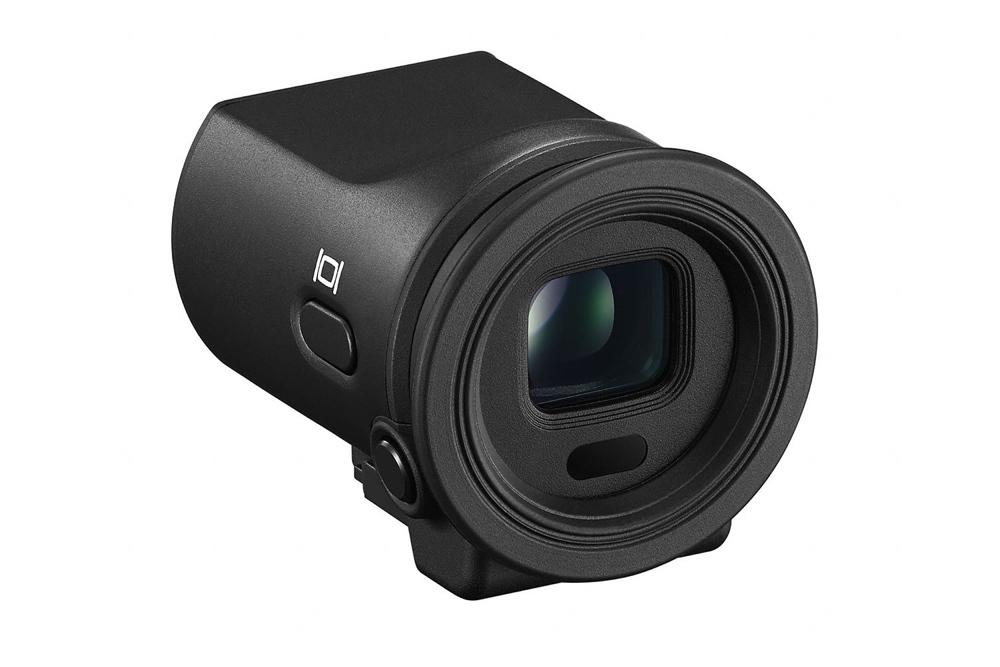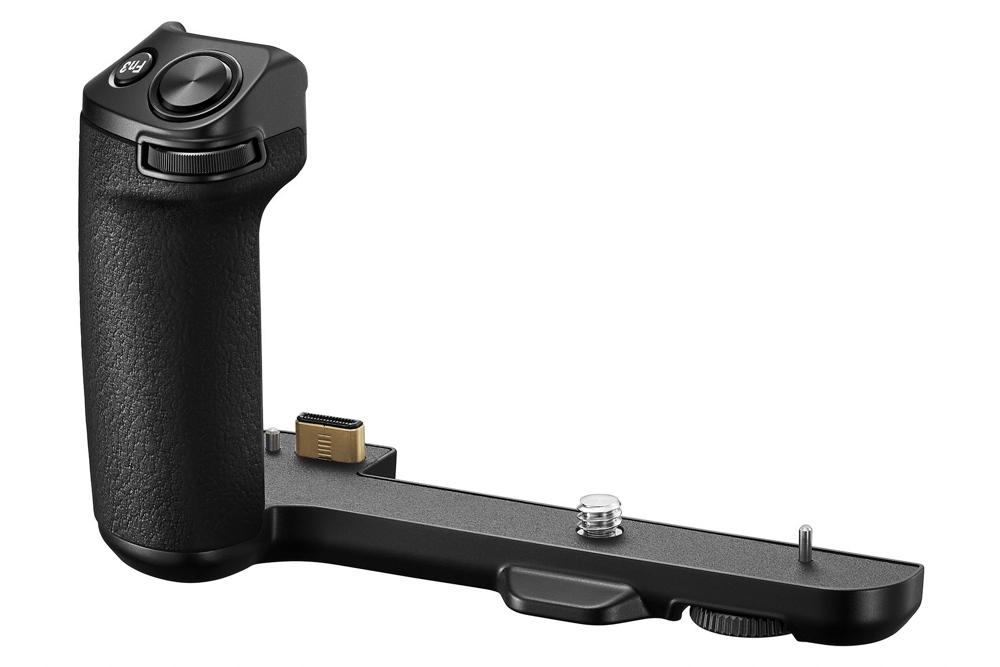It’s unfortunate that mirrorless cameras aren’t selling like hotcakes, because, in the past year, we’ve seen several sleek, high-performance models from almost every manufacturer that makes them – enough to confidently take on traditional DSLRs. Today, Nikon is adding one to the mix with the new 18.4-megapixel V3 in its Nikon 1 Compact System Camera (CSC) lineup. The company claims the V3 has the “world’s fastest continuous shooting frame rate” for an interchangeable lens camera, at 20 frames per second with full autofocus. Nikon adds that it’s faster than pro DSLRs, making it ideal for action shots. (Granted, claims like these are often either short-lived or debunked through testing, so we’ll have to take Nikon’s word for it, for now.)
Design-wise, the V3 dons a new look compared to its predecessors, the V1 and V2. While still in a matte black finish, this compact camera now has a textured grip on the front for a firmer hold. Nikon says the camera has design accents from the Coolpix P7800, with overtones from Nikon DSLRs. Indeed, the V3 looks more like a high-end Coolpix.
When used with the detachable grip accessory (included), however, the V3’s handling becomes more DSLR-like, with a more substantial grip that adds a shutter button and extra function button (Fn3). The back looks similar to the V2, but there are a few more buttons; the front and rear command dials are also reminiscent to the P7800. The V3 has a tilting 3-inch LCD (rated 1,040k dot), but Nikon has removed the built-in electronic viewfinder in favor of an EVF accessory that attaches to the hot shoe (also included); the EVF has a 2.3-million-dot LCD with 100-percent coverage, with a sensor that automatically switches between main LCD and EVF displays.
Nikon 1 cameras are compact shooters, but their CX-format sensors are much smaller than the Micro Four Thirds or APS-C versions used in most CSCs. The V3’s 18.4-megapixel sensor, however, has no optical low-pass filter to deliver sharper images. Working with the sensor is a new Expeed 4A image processor, and the camera has an ISO range of 160-12,800. The V3 uses a hybrid AF system with 171 contrast detection and 105 phase detection points, which, according to Nikon, autofocuses quickly at nearly 100 percent of the viewfinder area.
Movie capture is at Full HD 1080 at 60p, but the V3 is also Nikon’s first camera to do 120 fps in 720p. There’s full-time continuous autofocus, and when shooting at 30p, the camera’s internal electronic vibration reduction (Movie e-VR) adds stabilization to any Nikon 1 non-VR lens.
The V3 is also the first Nikon 1 camera to have Wi-Fi built in. Nikon has been slow to add Wi-Fi, preferring to offer an optional Wi-Fi adapter instead. Now you get all the typical camera Wi-Fi features, like smartphone pairing and wireless image transfers.
The camera’s Creative Mode features a new user interface that overlays a translucent menu over a Live View image. As you scroll through the various effects, you can see them being applied to the scene, which gives the user an idea of what the image may look like. Nikon added a few new modes, in addition to the ones introduced in the Nikon 1 AW1 and J3 models.
With the V3, Nikon is using Micro SD cards for storage instead of standard SD. These smaller cards are a mix bag, depending on the user. Some don’t like them because of their small size and difficult handling.
Compared to the J-series, the V-series offers greater performance while retaining the easy-to-use approach of a point-and-shoot. While there are other CSCs that offer stronger specs, it’d be interesting to see how well the V3 – with its smaller sensor – competes against the others. For those who want a strong interchangeable lens camera that’s easy to pocket, the V3 could be an attractive model to consider. But, as Nikon’s execs have acknowledged, compact mirrorless cameras are having a difficult time attracting consumers in the U.S., so it’s uncertain if the new V3 is strong enough to change consumer sentiments.
The V3 will go on sale in April with a list price of $1,200, which includes the 10-30mm lens, grip, and EVF. It’s quite expensive, considering Olympus’ new OM-D E-M10 – a stylish, compact Micro Four Thirds ILC that comes with a 14-42mm lens – sells for $799. The E-M10 is a camera we like, even though we thought that is expensive. Either we have to change our tune or the V3 really has to impress. The 10-30mm lens will list for $300 on its own, and $1,000 for the 70-300mm telephoto lens.






